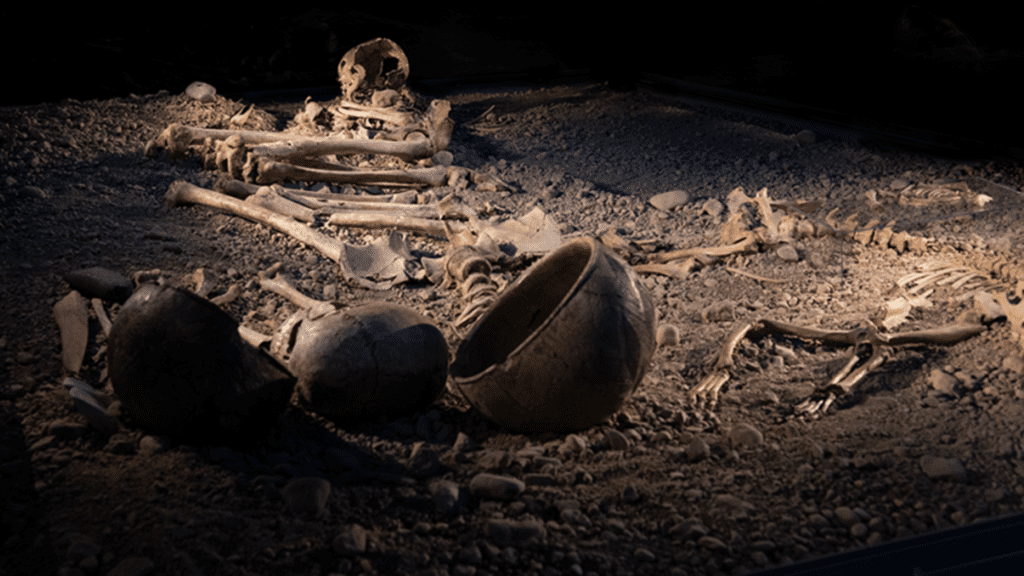Life in the Stone Age was quite challenging for our ancestors. They had to defend against animals and hunt for food, new create tools, and face significant fluctuations in climate to adjust to. Stone Age humans also encountered potentially fatal microorganisms that spread through kissing and consuming contaminated food, much like today. Some hazardous microorganisms were discovered in the remains of Stone Age individuals in present-day Scandinavia, offering new insights into a major lifestyle change in human history. The findings, detailed in a research published on March 7 in the journal Scientific Reports.
There are six primary types of microbes–bacteria, archaea, fungi (yeasts and molds), algae, protozoa, and viruses. Certain microbes such as probiotics help maintain the health of the human body, while others can cause illness. Bacteria and viruses are the most common microbes with genetic material organized in DNA. This explains why microbial DNA can be detected in the remains of infected humans and assists scientists in identifying evidence of illnesses caused by bacteria and viruses.
In the study, an international team of researchers studied the various types of microbial DNA present in the teeth of 38 individual human remains retrieved from several Neolithic settlements in Norway and Sweden. The material collected from Hummerviksholmen in southern Norway is estimated to be approximately 9,500 years old. The specimens from Bergsgraven in Linköping, Sweden are about 4,500 years old.
[Related: The most lethal viruses in human history, ranging from COVID to smallpox.]
660 microbial species were identified in these remains. Yersinia enterocolitica and Salmonella enterica were among the most prevalent bacteria discovered. They are commonly associated with contracting food poisoning from undercooked meat or consuming food contaminated with human feces. Even with modern medical care and food safety standards, around 48 million illnesses and 3,000 deaths occur each year in the United States due to food poisoning. Living in a time before life-saving treatments may have made an already unpleasant human experience even more deadly.
“Particularly in the case of Salmonella enterica , demonstrates how challenging it [food poisoning] could be. In a Battle Axe culture burial at Bergsgraven in Linköping, two infected individuals were found, and it is possible that we are witnessing their cause of death,” study co-author and Stockholm University PhD student Nora Bergfeldt stated. “This, along with other bacterial diseases found among the individuals, can be easily treated with antibiotics nowadays, but at that time, they could be fatal.”
They also discovered Neisseria meningitidis, which is linked to meningococcal disease. It is transmitted through the droplets of saliva released through sneezing, coughing, and kissing. Evidence of Neisseria gonorrhoeae–the bacteria causing the sexually transmitted infection gonorrhea–was also found in the microbial DNA discovered. These communal diseases found in microbial DNA date back to a lengthy transition from a hunter-gatherer and nomadic lifestyle to settling down to a farming life. It's believed that this transition started as early as 12,000 years ago.
“We know when people turned to farming in Scandinavia, but we still do not know how this change in lifestyle affected the general health,” Helena Malmström, a study co-author and biologist at Uppsala University in Sweden, said in a statement.
[Related: Plague DNA was just found in 4,000-year-old teeth.]
This transition might be reflected in the presence of bacterial diseases, as they observed more infections from contaminated food and water and interactions with livestock and one another. Today, illnesses like norovirus and meningitis can quickly spread in schools, dormitories, and nursing homes, and other places where large groups of people are in smaller spaces. The study also found evidence of Yersinia pestis—the bacteria that causes the plague.
“The more people interacted, [the] more possibilities to infect one another occurred,” study co-author and Stockholm University geneticist Anders Götherström, said in a statement. “But even if we do encounter bacteria with potential to impact societies such as Yersinia pestis, it is the infections that spread through food that is most prominent across the lifestyles in this study.”









